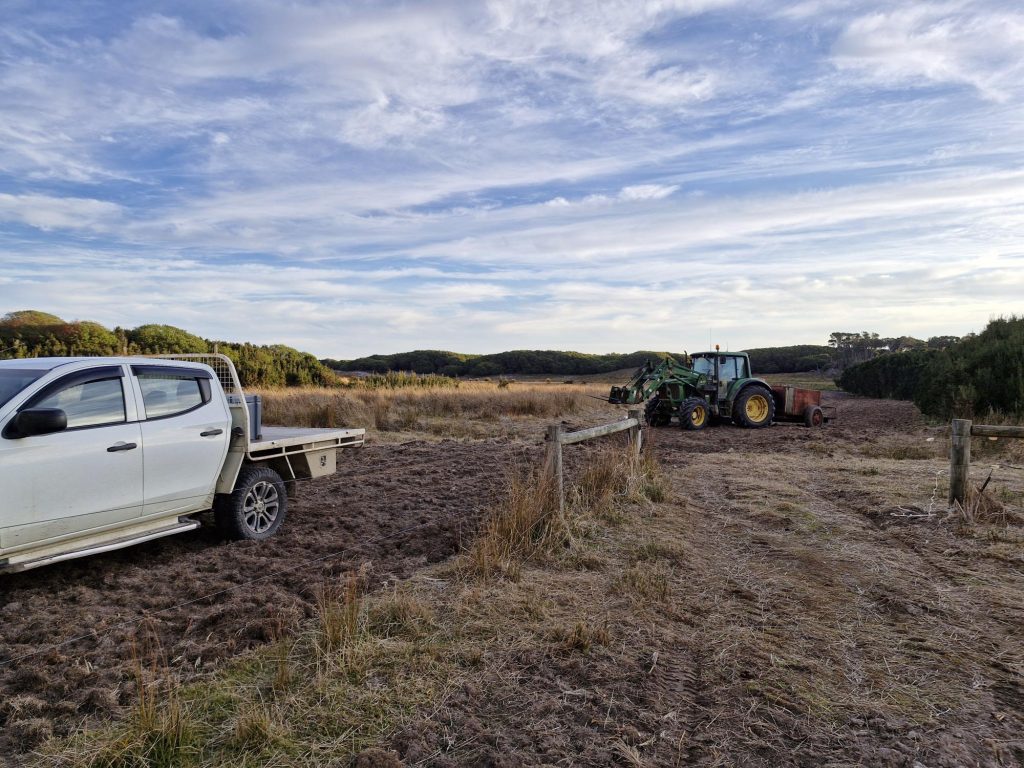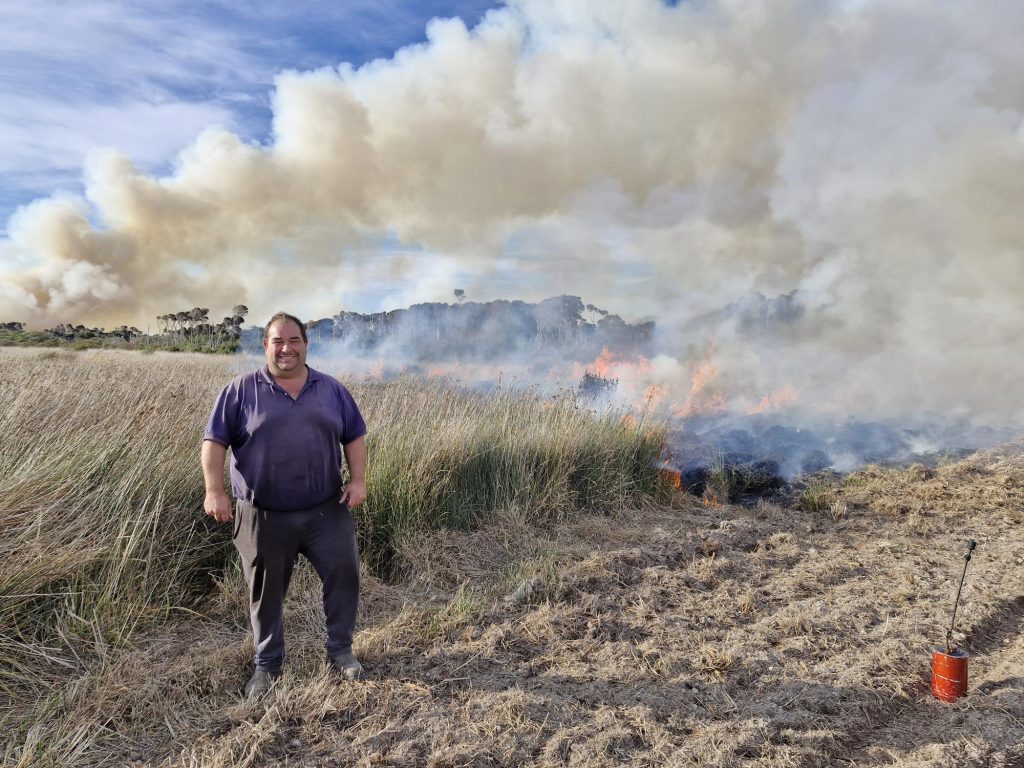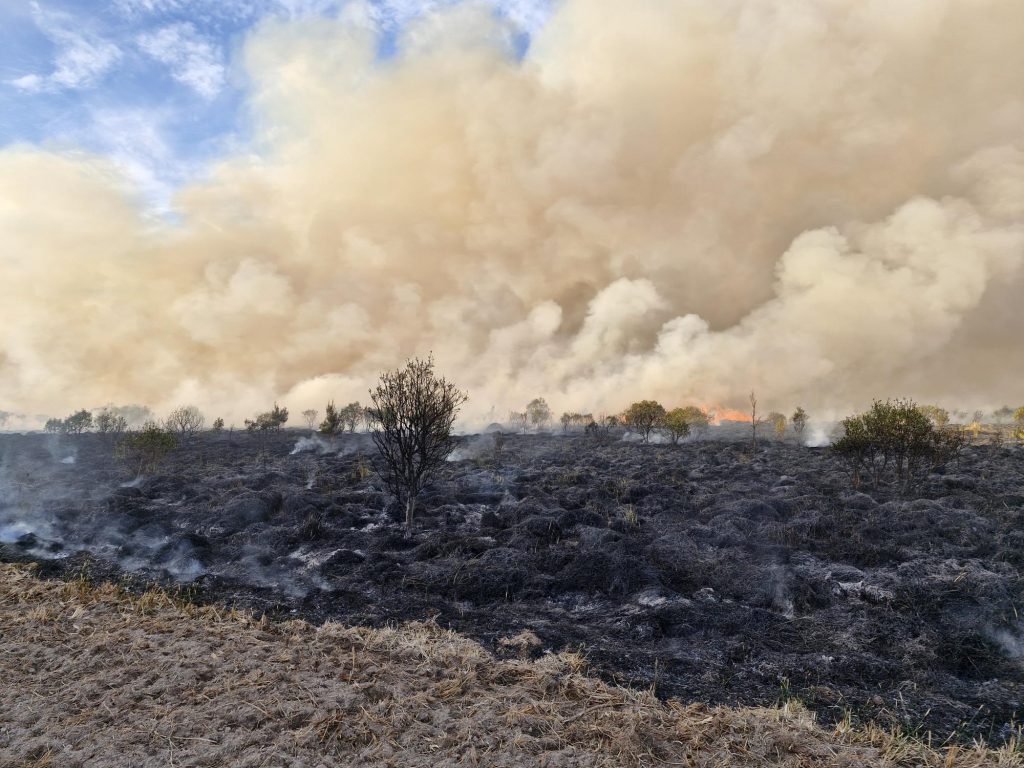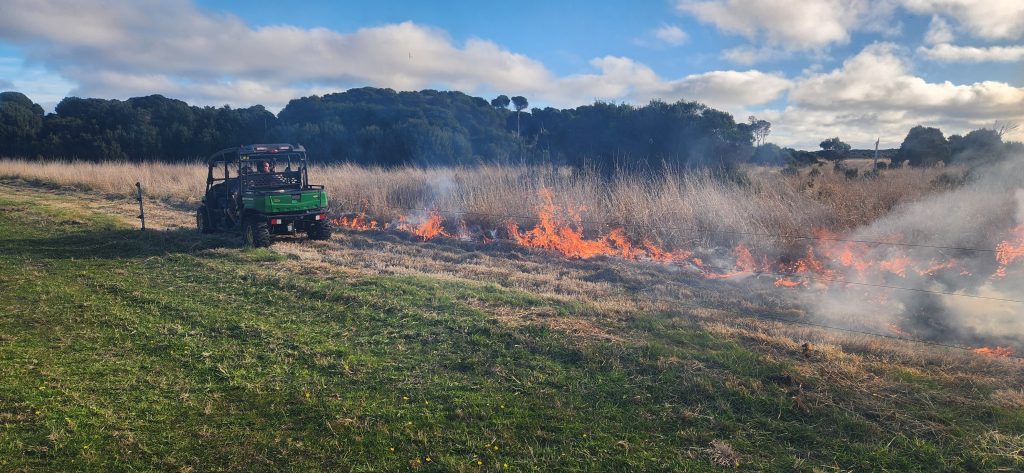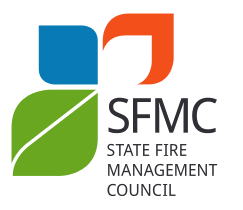Red Hot Tips has been fortunate enough to assist some Flinders Island landowners this past week, with multiple training burns being completed.
This has been a great example of how much time and effort goes into good planning and fuel reduction burning to ensure that it both meets your objectives but most importantly is carried out in the safest way and meets all prescriptions for what you are burning.
A few key points here:
- These blocks have been on the landowner’s action list for several years – waiting for suitable conditions (soil and fuel moistures)
- The landowners committed significant time and effort to ensure great control lines and split blocks into manageable sizes.
- The Red Hot Tips staff assisted and monitored weather to ensure conditions were suitable for both ignition days and 48hrs post ignition…. And if you know Flinders that is why it was all go once that was confirmed.
- We worked with the landowner to assist building a fuel modified buffer back away from the most vulnerable edge. Planning in steps is key.
- Blocks were targeted late afternoon into early evening. Remember the RH will come up and the temp will go down, and the evening stability made the burns significantly safer and easier to manage.
As successful as the burns were and with great effort from the landowner it could not have been completed without support of the regional Tasmania Fire Service Staff. We would like to recognise the effort and support of local Flinders Island Volunteer Group Officer, Stephen Mason, who is always very supportive of both the Red Hot Tips Program and good fuel reduction.
The logistics and complexities of burning on Flinders are no small thing, and we thank everyone involved in getting this completed safely while meeting the landowner’s objective.
